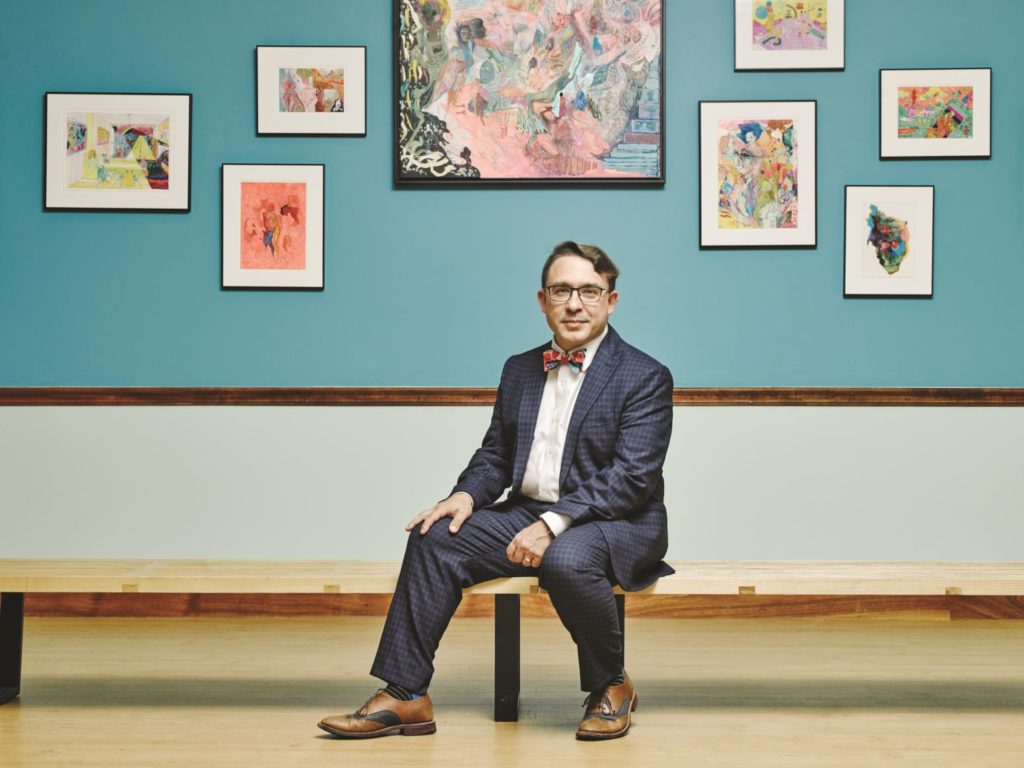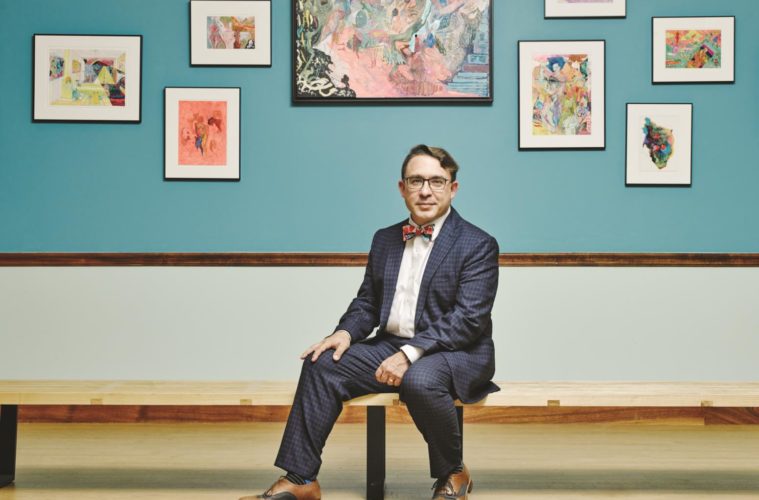
From Vincent van Gogh to Edgar Allan Poe, the idea of the starving artist is enduring, even romanticized. But for Kurt T. Steinberg, Ed.D., there’s nothing romantic or even realistic about the “starving artist” trope these days. Not only is it inaccurate and insulting, but Steinberg believes that in the context art education, it’s actually damaging. “I think it is unethical and immoral for art and design schools to ever perpetuate the idea of the starving artist,” he says. Such a stereotype is a falsehood, he adds, that devalues artists personally and professionally, and implicitly makes the argument that a creative profession isn’t a valid career choice.
“I always rail against that idea,” Steinberg says. But he doesn’t just rail against it in conversation; he’s also doing something about it as president of Montserrat College of Art in Beverly.
After about a year in the role, Steinberg is as committed as ever to advancing Montserrat’s mission of preparing its students to make a living in the fields of art and design. Each of the college’s offerings—including its courses and majors, its internship programs, and its postgraduate support services—attempts to fulfill a singular charge for students: “How does it support a creative life?”
In doing this, Montserrat vividly illustrates that its students’ creative skills are “critical to the world,” says Brian Pellinen, dean of academic affairs. Although art that exists chiefly for beauty is inherently important in itself, there’s also a valuable utility to what Montserrat’s students design and make, he says. They’re using CAB software, doing film and video editing, making books, and creating animation, and through it all, they are engaging with the community and the wider world. “Look around your room, look around your office. Everything you touch, everything you wear has been designed,” Pellinen says. “That’s utility, and that’s what our students do.”
Pellinen says Steinberg “brings an exciting new energy to a place that’s really ready to grow.”
Henrietta Gates, chair of the board of trustees, agrees. “Kurt’s vision builds on the strategic plan of three years ago, which emphasizes the importance of embedding professional preparation in the curriculum and preparing our students for a creative life after graduation,” she says.
Montserrat’s renewed vision reflects the way the college and the larger culture is changing. Montserrat opened in 1970 as a school for visual arts, and then went through some years of fluctuating enrollment and up-and-down finances during the economic downturn before a combination of smart fundraising and a strong focus on enrollment during the last few years of President Emeritus Stephen Immerman’s tenure righted the ship.
With its financial viability and long-term sustainability secured, the interdisciplinary art and design college has been turning its attention to its next chapter. “What is the next version of us?” Steinberg asks.
As a specialty school with a strong studio culture and deeply experienced faculty, Montserrat offers an intimate, intense, and focused setting in which to study art and design. Its student body is intentionally small, with a 12-to-1 faculty-to-student ratio. “We are about 400 students, and that is on purpose. That’s an intentional choice by the college,” Steinberg says. “What we’re offering in the art and design space is the opportunity for students never to get lost.”
Montserrat also offers students something even more practical: a path toward employment in the creative field of their choice. Steinberg says Montserrat wants to ensure that its curriculum helps students plan their futures and find answers to real-world questions such as, how do I get studio space? How do I price my work? How can I be a small business owner and support a creative life?
The college is tackling these questions in a number of ways, from its minor in entrepreneurial studies to its 120-hour internship graduation requirement. It also gives students freedom within the structure and safety of the school to experiment with their work and fail productively. “If you don’t fail, if you don’t experiment or push the edges of things while you’re in art school, it’s never going to happen,” Steinberg says. “Go to the edges of your discipline; do it here so you can learn something.”
That career focus is paying off. Steinberg says half of students get a job offer from the organization where they intern; 90 percent of graduates are some status of employed; and 85 percent of graduates are still employed in their discipline five years after graduating, still working in the area in which they majored. “Any college would love that, not just a specialty school,” he says.
Steinberg’s tenure is also marked by a number of investments in both current and future projects, including technology, a fabrication lab, continuing education and gallery programs, expanded studio space, and upgraded and new housing.
There’s also a renewed focus on and expansion of Montserrat’s already strong international programs that give students deep, immersive experiences like studying narrative photography in Mallorca or getting an up-close look at art history in Italy. “Montserrat’s commitment to strong international programs and new agreements with China, India, Japan, and other countries will result in more international students coming to Montserrat and a high percentage of students studying abroad,” Gates says.
Such international opportunities are another critical component to creating a global workforce in which Montserrat students will be prepared to play an integral part. “I think what we’re seeing is an awakening or a consciousness of the fact that creativity or a creative person has touched everything around us,” Steinberg says. “The sustainability of what we do is sort of rooted in that global concept. Art and design schools and programs are essential to creating a workforce that can participate in that.”
montserrat.edu

